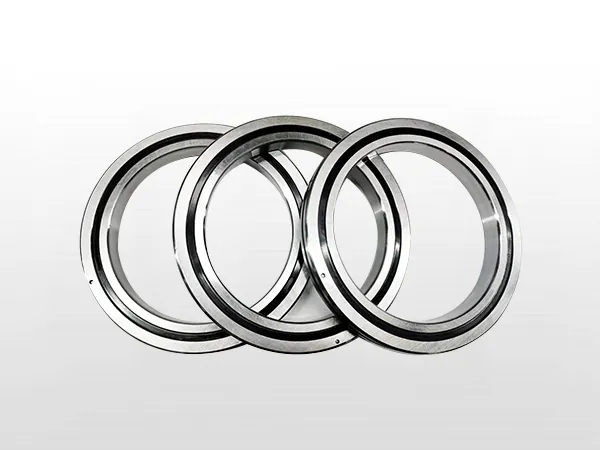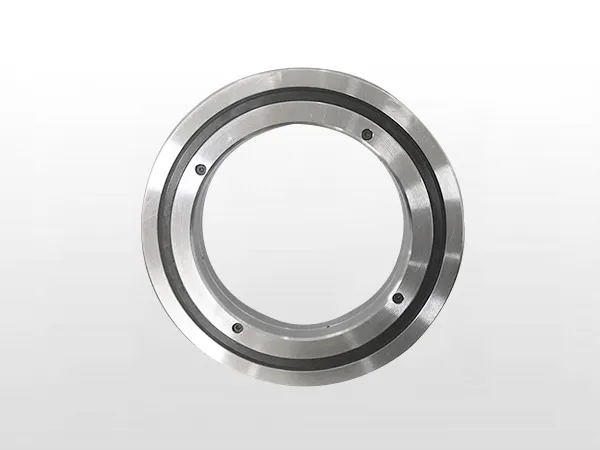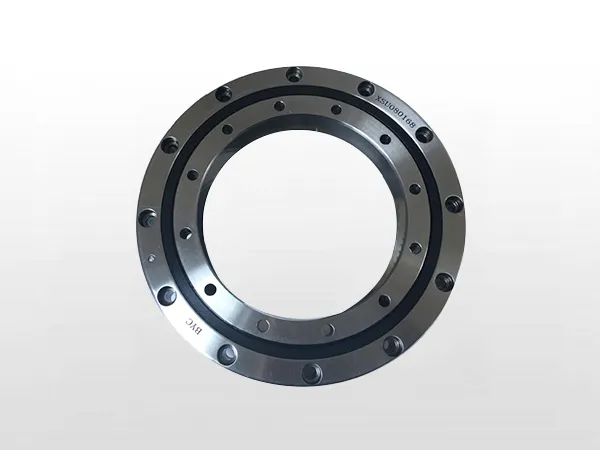Crossed roller bearings are precision components commonly used in applications where high rotational accuracy and load-bearing capacity are critical. Proper maintenance is essential to ensure the longevity and optimal performance of crossed roller bearings. Here is a guide to maintenance practices for crossed roller bearings.
1. Regular Inspection
Perform visual inspections regularly to check for any signs of wear, damage, or contamination.
Inspect the surfaces of rolling elements and raceways for signs of pitting, scoring, or discoloration.
2. Lubrication
Use the recommended lubricant specified by the bearing manufacturer.
Ensure proper lubrication at regular intervals to prevent friction and wear.
Monitor the quantity and quality of lubricant, and replenish as needed.
Consider environmental factors (temperature, contaminants) when selecting lubricants.

3. Mounting and Installation
Follow the manufacturer's instructions for proper mounting and installation procedures.
Use the correct tools and methods to avoid damaging the bearing during installation.
Ensure proper alignment and preload according to the manufacturer's specifications.
4. Environmental Considerations
Protect crossed roller bearings from contaminants such as dust, dirt, and moisture.
Consider using seals or shields to prevent foreign particles from entering the bearing.
Maintain a clean working environment to reduce the risk of contamination.
5. Temperature Monitoring
Regularly monitor the operating temperature of the bearing.
High temperatures may indicate inadequate lubrication, misalignment, or overloading.
Investigate and address any abnormal temperature increases promptly.
6. Load Considerations
Avoid exceeding the specified load capacity of the crossed roller bearing.
Ensure that the applied load is distributed evenly across the bearing elements.
Consider dynamic and static load capacities when designing or using the bearing.
7. Vibration Analysis
Periodically conduct vibration analysis to detect any abnormal vibrations.
Unusual vibrations may indicate misalignment, imbalance, or other issues.
Address any identified problems promptly to prevent further damage.
8. Corrosion Prevention
Protect the bearing from corrosive environments.
Use corrosion-resistant coatings or materials when applicable.
Regularly inspect for signs of corrosion and address them promptly.

9. Handling and Storage
Handle bearings with care to avoid dropping or impacting them.
Store bearings in a clean and dry environment, away from direct sunlight.
Use appropriate protective covers during storage to prevent contamination.
10. Periodic Re-Greasing
Depending on the application, consider periodic re-greasing to replenish the lubricant.
Clean the bearing housing and surrounding components before re-greasing.
11. Training and Documentation
Ensure that maintenance personnel are trained on proper bearing handling and care.
Keep detailed records of maintenance activities, including lubrication schedules and inspections.

12. Replacement of Worn Parts
If any components show signs of wear beyond acceptable limits, replace them promptly.
Regularly check for play in the bearing and replace components if necessary.
13. Manufacturer Guidelines
Always refer to the manufacturer's guidelines and specifications for maintenance recommendations.
Follow any specific instructions provided by the manufacturer.
By adhering to these maintenance practices, operators can maximize the service life and performance of crossed roller bearings, ensuring reliable and efficient operation in various applications. Regular inspections and proactive maintenance can help identify potential issues early, preventing costly downtime and repairs.
